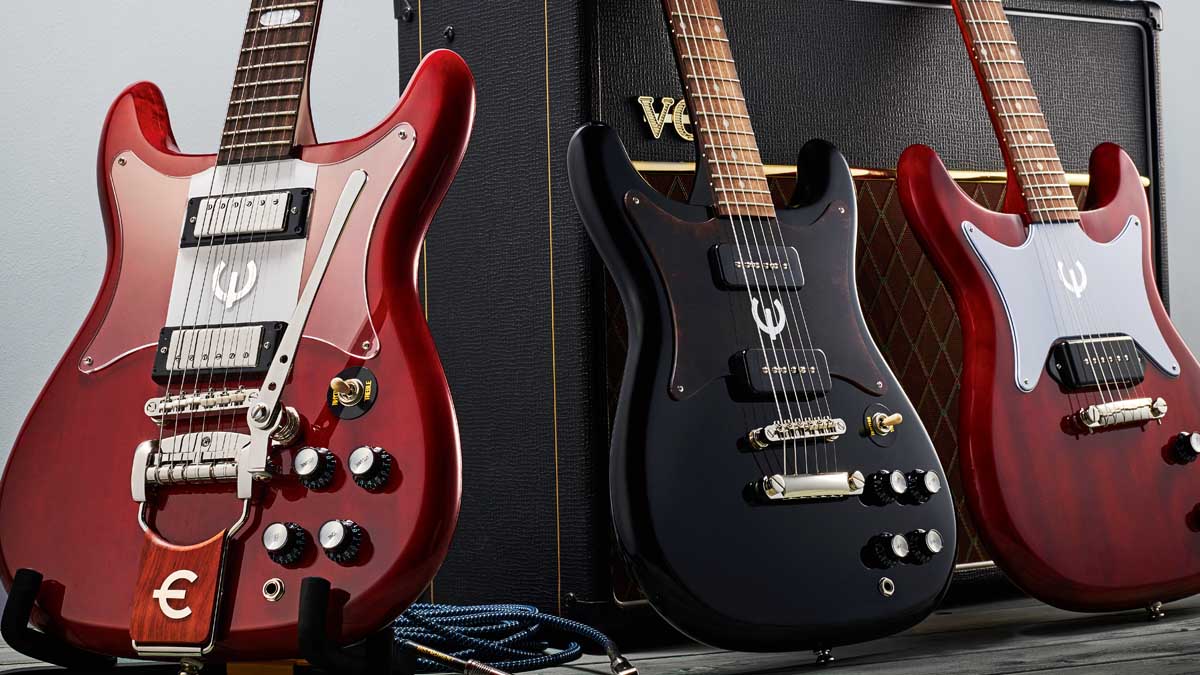Guitar World Verdict
Three of the coolest vintage-inspired electrics we have seen at this price, this Epiphone trio offers a fantastic range of tones, with a feel and playability that players of all abilities will enjoy.
Pros
- +
Fabulous value.
- +
Brilliantly ballsy tones.
- +
Great neck.
- +
The Wilshire is more versatile due to that second pickup.
- +
Crestwood has gorgeous bright but ‘important’ tones.
- +
It has a Quirky but cool vibrato system, too.
Cons
- -
Location of strap button makes these a tad headstock-heavy.
- -
No lefties.
You can trust Guitar World
Let’s get the obvious out of the way right here: these are some of the coolest-looking electric guitars ever made. There’s no debating that fact, so let’s quickly move on…
The Coronet, Wilshire and Crestwood were released in 1958 (Crestwood) and 1959 (Wilshire and Coronet) as Epiphone’s answer to the Gibson Les Paul Junior and Special. Epiphone had been part of the Gibson family since the two companies came together just the year before.
But the once rival firm became vital to the parent brand in that it allowed Kalamazoo-made instruments to be sold to retailers that, due to territorial restrictions in Gibson dealers’ contracts, were otherwise out of bounds. As was so often the case with new models that emerged around this time, all three underwent changes – big and small – in the five or so years post launch.
And without presenting you with a comprehensive and almost certainly tedious list, some of the most obvious changes include: slimming the body down from the original 44.45mm (1.75 inches) to 35mm (1.375 inches) as here, and rounding off the squarer Tele-style edges; losing the kitsch-but-cool metal nameplate seen on our guitars and switching from this short double-sided headstock to the famous ‘batwing’ six-a-side design; and lessening the lower horn and replacing the launch models’ asymmetrical pickguards with the ‘butterfly’-style and large ‘E’ logo, again as here.
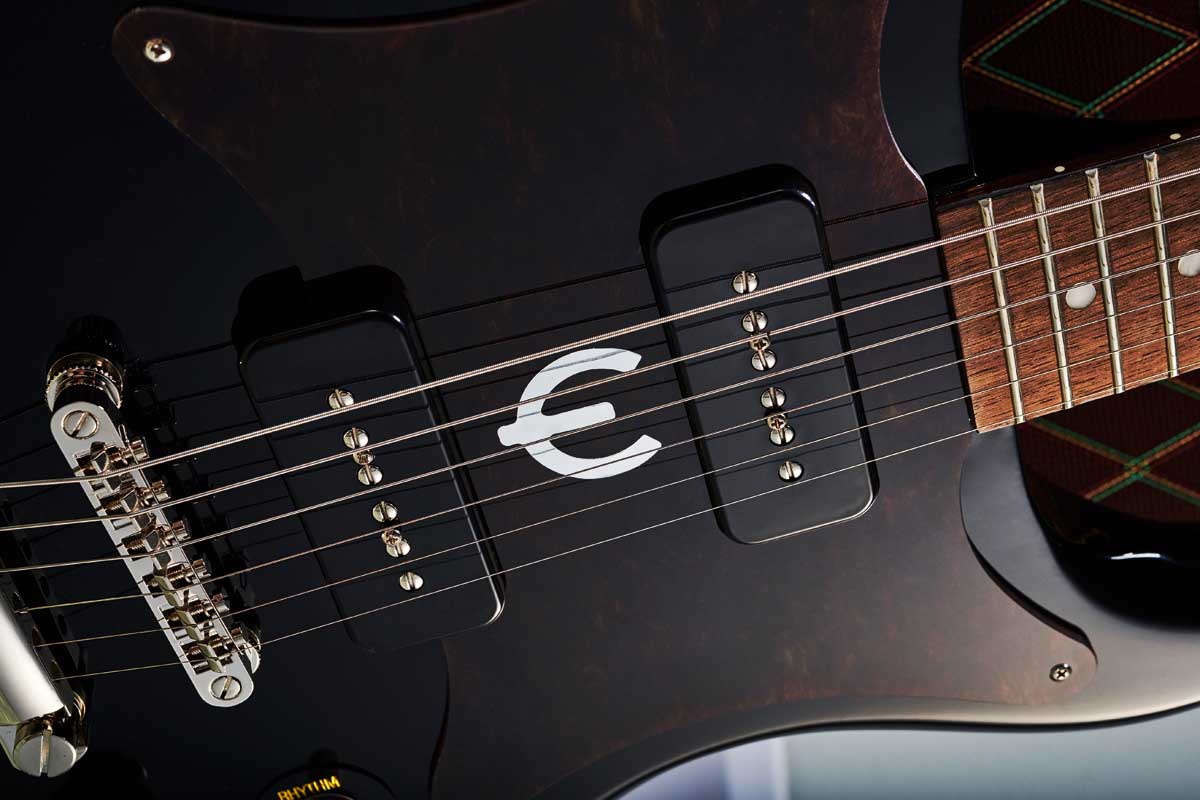
Possibly most notable of all was that, when they ran out of the single-coil Epiphone New York pickup, Gibson wisely fitted its more powerful P-90 to the Coronet and Wilshire, and its new mini-humbucker to the Crestwood – which became the Crestwood Custom a year after launch. Phew!
So, even with that stripped-down version of events, you can see it was a complicated if not turbulent time for the range, and, in a way, what we have here is the most pleasing visual and working compromises of all the above versions.
Clearly there’s a hierarchy present, with the flashier two-pickup Crestwood Custom sitting at the top of the pile and the simplest of the three, the single-P-90 Coronet, at the bottom. Snuggled in the middle sits the Wilshire, a sort of ‘Special’ to the Coronet’s ‘Junior’.
All three guitars are finished in lustrous polyester, and all feature nickel-plated hardware and the stylised Epiphone ‘E’ in gold foil in the centre of their ‘butterfly’-style pickguards. And just to show the level of thought that’s gone into the new range, they all come with Graph Tech NuBone fingerboard nuts, where Epiphone could have easily insinuated cheapo plastic.
Spot The Difference
Actually, Epiphone has made the demarcations very clear in these new models. And, while they all sit on the same double-cutaway body, they’ve been designed as specific propositions in their own right, each one bringing something specific to the table.
Going from bottom to top of the range, we begin with the delightfully basic Coronet. Checking the spec on Epiphone’s website it’s clear that, despite these instruments’ entry-level price points, the company has not stinted with the quality of materials or parts.
We don’t know what genus of mahogany this is, but it’s stated as that fabled guitar tonewood in the spec, while the fingerboard is Indian laurel. Also known as Indian walnut, this timber (which other makers, not least Gretsch, have also employed in certain recent models) is grown in both that country and Myanmar and is not on the CITES list of endangered species.
With its dark streaky lines on a medium-brown background it looks like a super alternative to the scarcer rosewood. The body is centre-jointed while the glued-in neck is a single piece, save for the added headstock wings that you’ll find even on Custom Shop Gibsons. So, no scarf joints or stacked heels here.
The Coronet’s single pickup is a dog-ear P-90 Pro, which we already know is a great-sounding, fat-toned single coil, here mated to quality CTS pots and heavy-duty output jack. The wrapover bridge/tailpiece is the same compensated ‘Lightning Bar’ that Gibson fitted to certain SGs in the 60s, and is a preferable alternative to the basic stopbar that lacks individual string intonation.
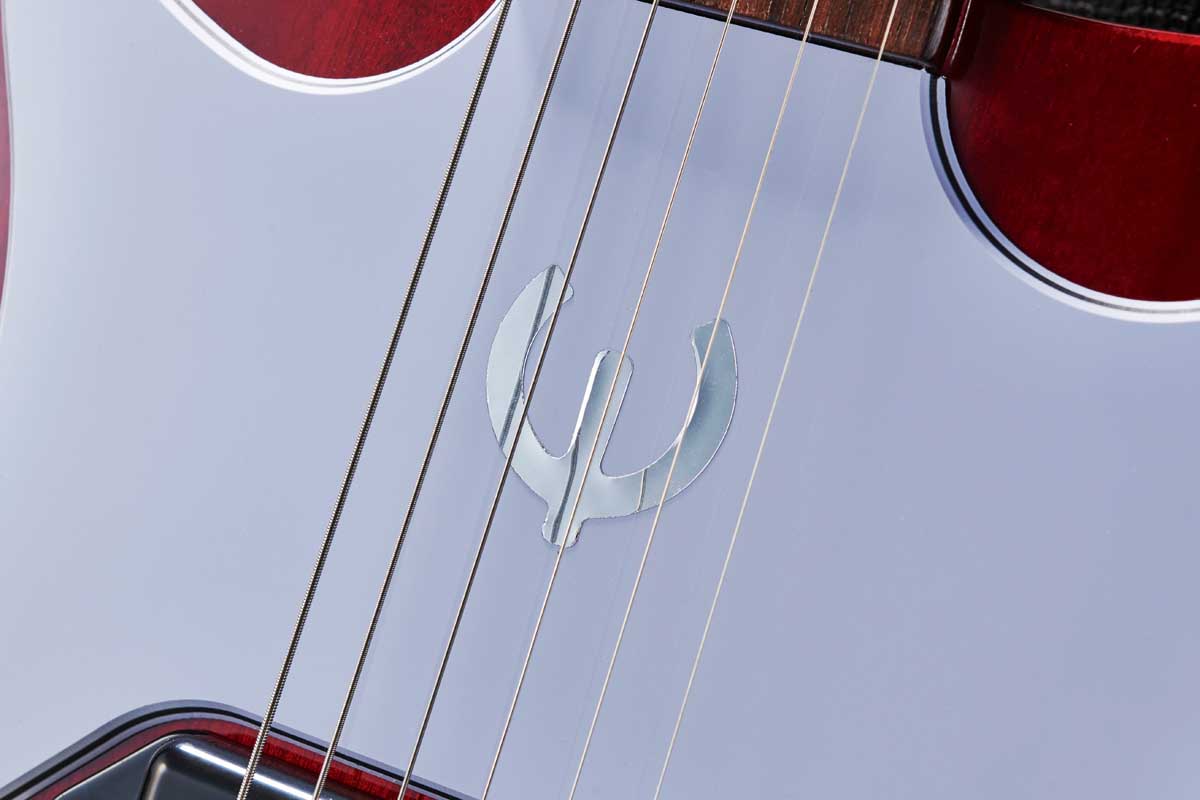
Moving up a rung we come to the Wilshire. Essentially a double-P-90 version of the Coronet, it’s based around an identical platform but with two ‘soapbar’ style P-90 Pros linked to twin volume and tone pots. The three-way pickup selector toggle and jack socket are located in the same cluster.
Here, the pickguard is single-ply faux tortoise and we find a regular tune-o-matic style bridge that Epiphone calls the ‘LockTone’, with standard stud tailpiece. The finish is black, and just like the Coronet’s classic Cherry, is perfectly buffed to a bright gloss. Moving on up to the top-of-the-range Crestwood Custom, this is the most different of this trio.
Visually, what one notices first is the clear plastic pickguard with large white centre stripe – actually painted onto the underside so the top is perfectly smooth. On this Cherry finish you might think it looks a little odd – perhaps a touch too busy – but check out the Polaris White version and it makes instant visual sense. Here, the pickups are Epiphone Pro mini-humbuckers.
Gibson has used mini-humbuckers in various forms on a variety of instruments, from Les Paul Deluxes to Firebirds and, of course, on the Epiphone Riviera and Sheraton models – even jazz guitars like the Johnny Smith.
So, as you can see, it’s a fantastically versatile pickup with a sound all of its own – that narrow footprint providing a brighter, clearer voice than that of its bulkier siblings. Control layout is as on the Wilshire, but the big departure here is that interesting-looking vibrato tailpiece.
The ‘Tremtone’, as Epiphone titled it (we love all those corny monikers the electric guitar and amp companies dreamt up), naturally evokes thoughts of Paul Bigsby’s classic unit, and there are certainly elements of that in how it operates.
The Gibson-style scale length makes for easy string bends, while the medium jumbo frets and laurel ’board do indeed contribute to that comfortable and familiar feel
However, unlike the former contraption, which is notoriously tricky to load (with the strings’ ball-ends having to hook onto tiny posts on a wrap-around bar), here the strings simply load through rearward-facing holes and pull up and over without the ‘popping off’ problem that afflicts regular-style Bigsbys (some recent versions have addressed this, of course).
What also sets this tailpiece apart is the Indian laurel insert, with the attractive Epiphone ‘E’ emblem making a second appearance. And check out the two extra holes in the vibrato arm: these are for relocating its pivot point should you prefer it shorter for a more positive action – simple but cool, and just the kind of clever hack that our own Trev Wilkinson might dream up.

Feel & Sounds
The guitars all came with slightly different setups out of the box, mostly a little on the high side for this particular player. But a few minor tweaks soon brought them into line – and bear in mind we often do the same on instruments far higher up the food chain.
All three necks are exactly the same medium C profile, thickening slightly from approximately 21mm at the 1st fret up to 23mm at the 12th. Scale length is a uniform 628mm (24.72 inches) and nut width is a ubiquitous 43mm (1.69 inches).
Frets are medium jumbo – pretty much par for the course these days and likely to provide a fuss-free playing experience on the 305mm (12-inch) radius fingerboard. The necks join the body at the last of their 22 frets, leaving the entire fingerboard available for your explorations.
On a strap it’s a little like a Gibson SG with its strap button also located behind the heel, so there’s a tendency for the necks to drop when not supported. The popular fix was usually to add another button on the top horn, as on a Strat, and that might be worth doing if this top-heaviness offends.
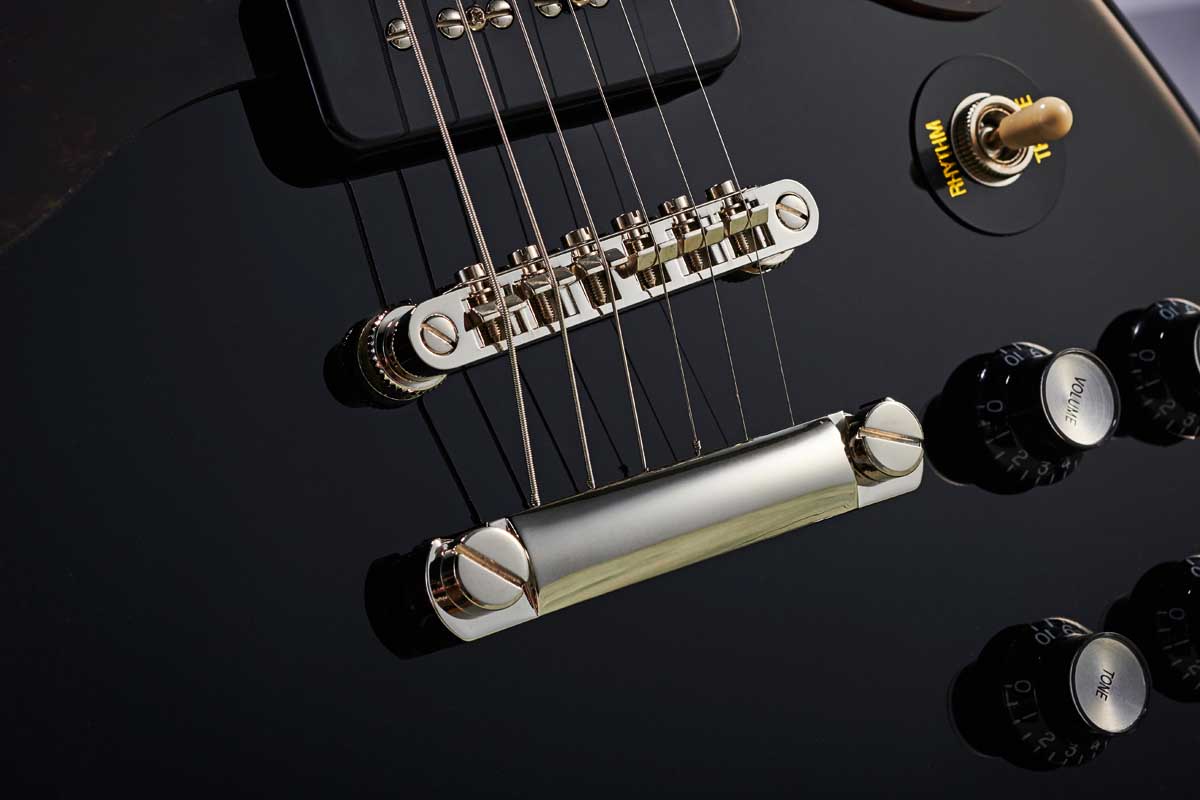

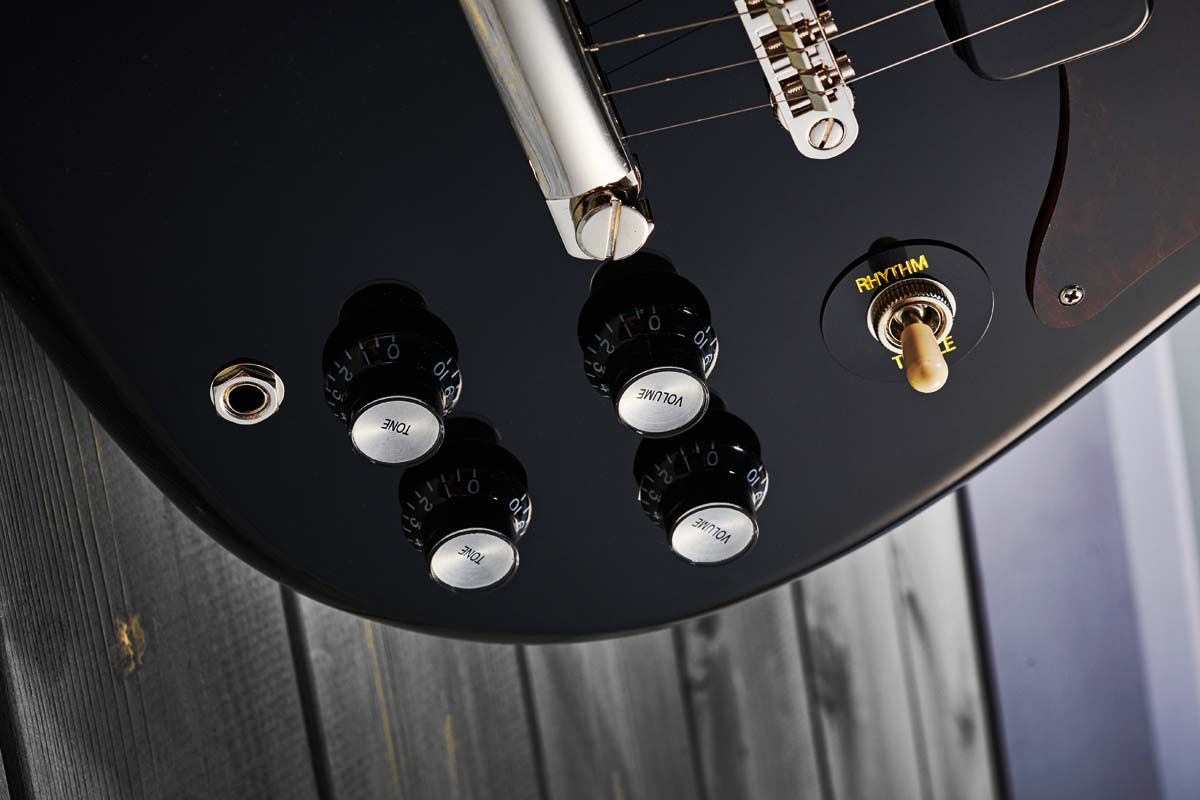
Otherwise, each guitar’s neck is an enjoyable playground, and the Gibson-style scale length makes for easy string bends, while the medium jumbo frets and laurel ’board do indeed contribute to that comfortable and familiar feel.
Sonically, the Coronet’s bridge P-90 Pro is a killer. Even with the tone wide open it’s fat but very present, cleaning up a treat when you knock the volume back to 3, or even 2.
With the power cranked back up and the treble tamed, the sound is huge – like Clapton meets Leslie West and, really, what more could you want? Swapping to the Wilshire its bridge pickup offers more of the same ballsy fare, while the neck unit kicks out smooth, fruity tones that never get too muddy, even when pushing the gain. Kind of like a really fat Strat.
The Pro mini-humbuckers are spectacularly good. Clean, they retain an open clarity that’s bright but never piercing. Add a nice drive pedal and it’s one of the most musical sounds around
Select the middle position on the three-way and things get distinctly ‘quacky’, in the nicest possible way – sort of ‘country meets Crossroads’ if you will, and the kind of tone Joe Walsh often goes for with The Eagles. The Crestwood Custom is the big surprise.
The Pro mini-humbuckers are spectacularly good. Clean, they retain an open clarity that’s bright but never piercing. Add a nice drive pedal and it’s one of the most musical sounds around; that lovely high-end remains but the voice becomes incredibly expressive.
Each position on the switch sounds great, and the nearest player whose sound you might recognise in it is Johnny Winter, whose Firebird pickups were, of course, close relations to these. Try some dirty slide with both pickups on – it’s Texas blues-rock heaven!
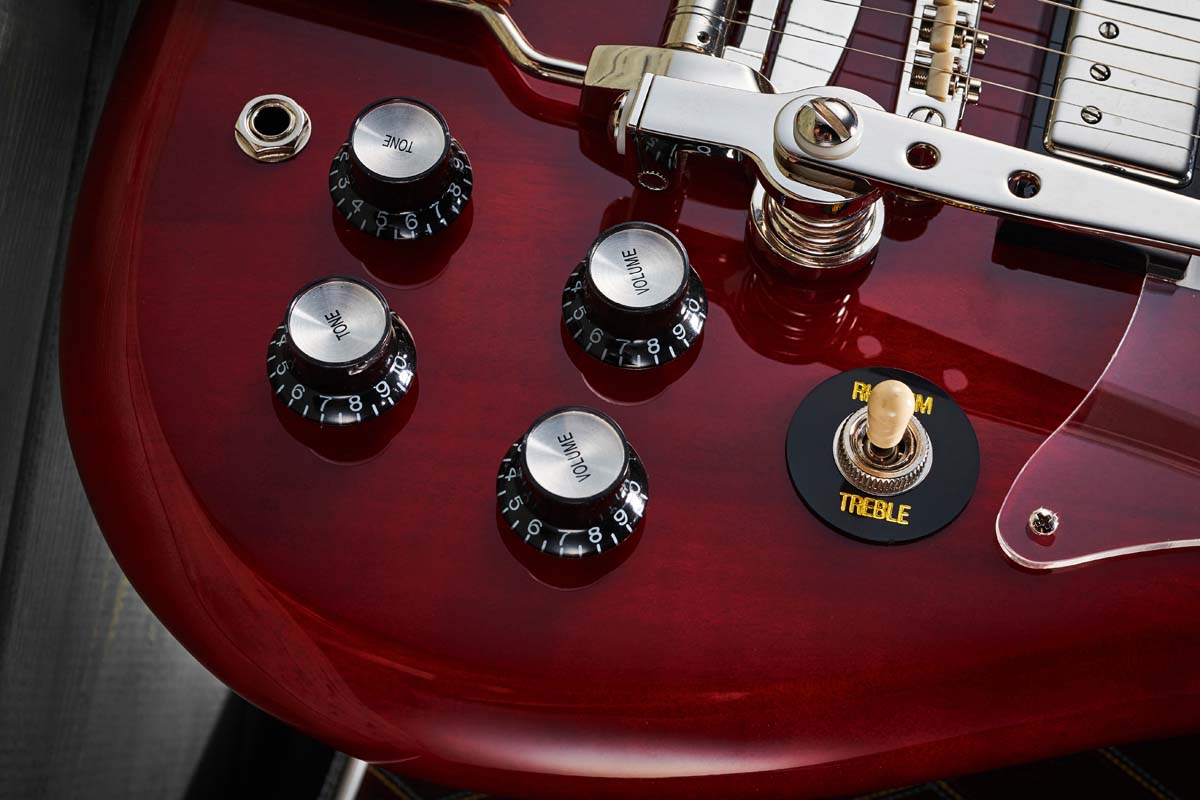
Verdict
At the top of this piece we asked whether guitars at this entry-level price point could impress a gnarled old Guitarist reviewer. Well, the answer is a resounding yes! Of course, these are not Honduran mahogany and Brazilian rosewood marvels, but modern-day versions of 60-year-old Epiphone entry models using today’s available materials.
That Epiphone has done it so well, and employed such great-sounding pickups and even bothered with quality pots and nut material, is a testament to the brand’s clear desire to get it right. And if you go back to the days of the company’s original Coronet, its parent marque’s LP Junior and, yes, even the Fender Duo-Sonic, it’s exactly what they did all those years ago.
“Get them playing your brand at the start and they’ll stay with you forever; put them off with an unplayable, cheap-sounding plank and they’ll go elsewhere,” is what a fairly high-up Gibson man told this reviewer back in 1978. How right he was. And on the basis of these three lovelies, we’d certainly stick with Epiphone.
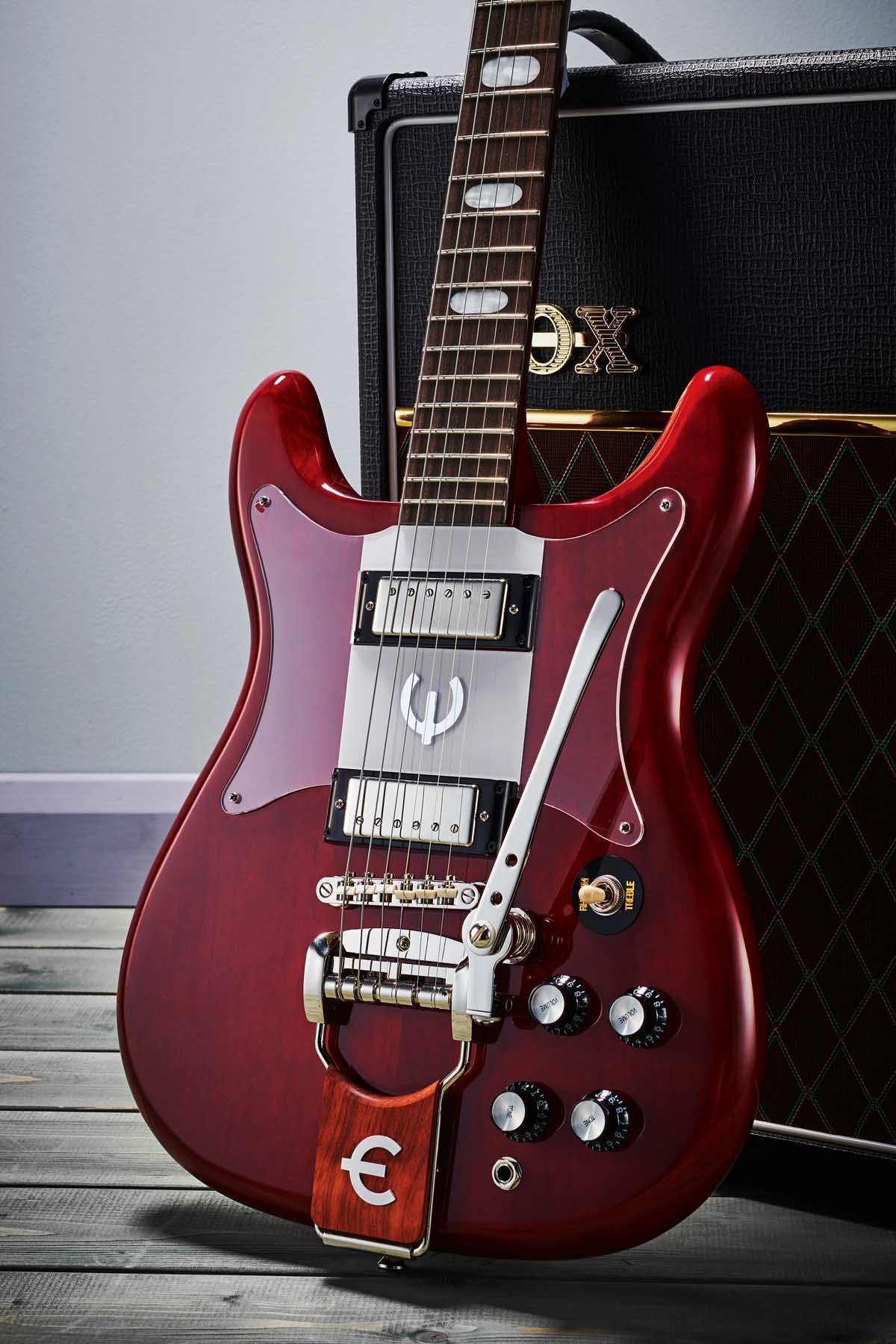
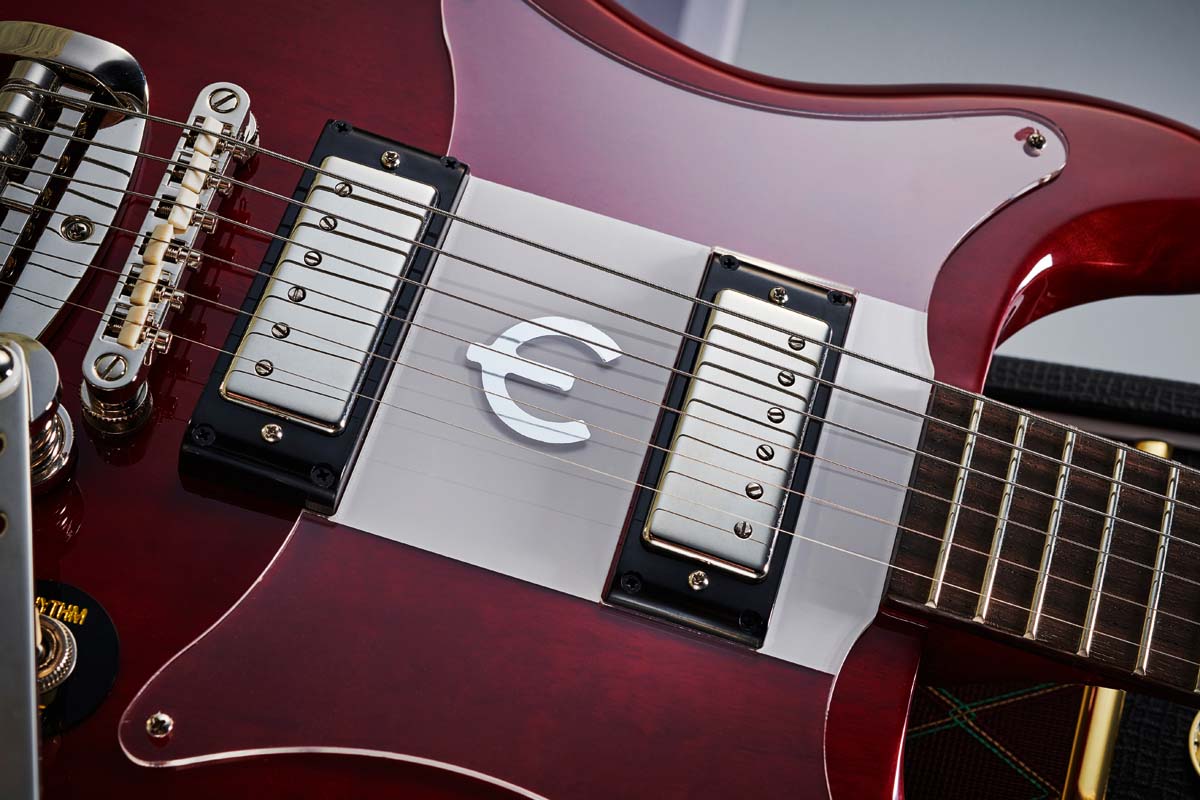
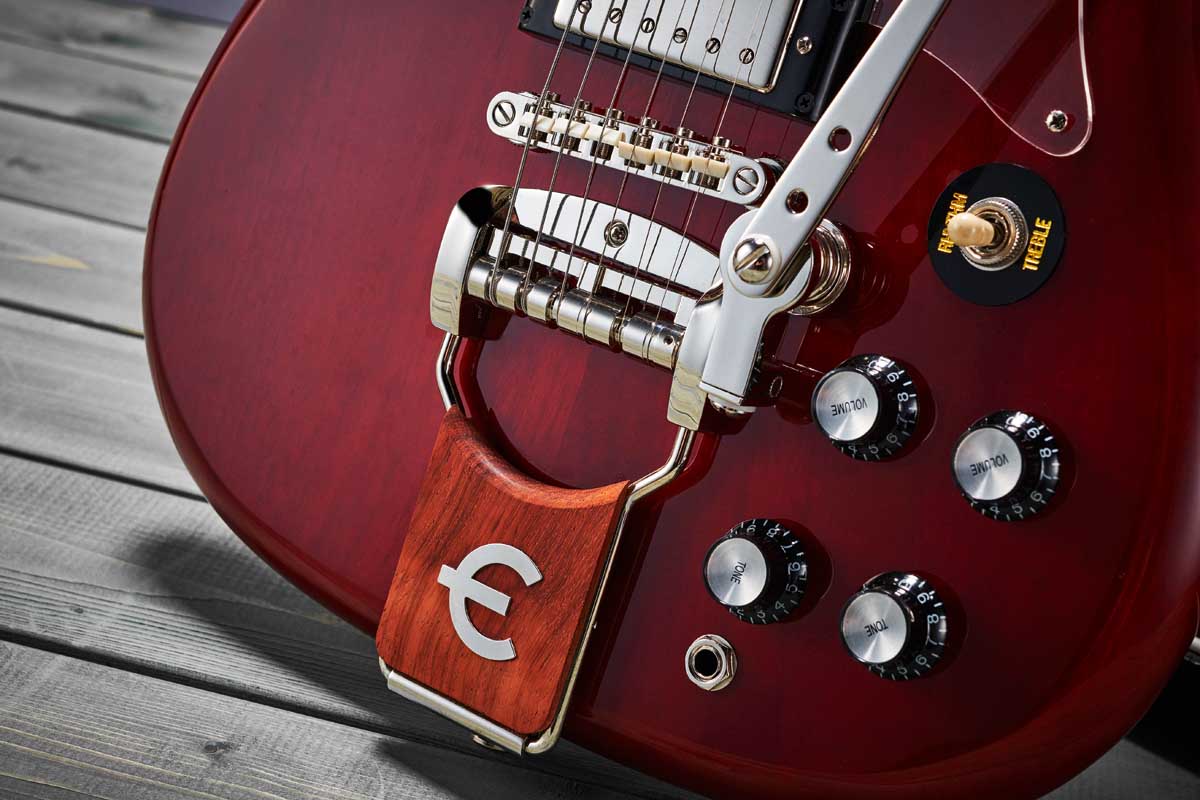
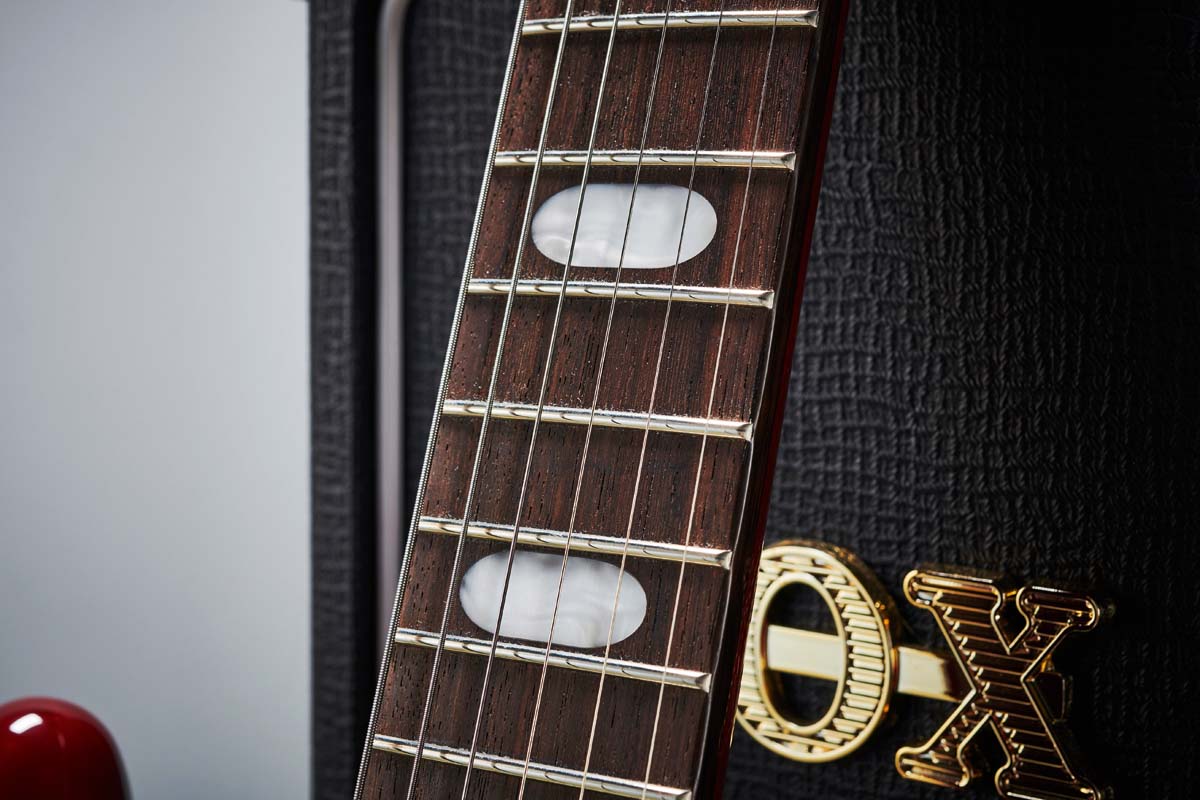
Specifications
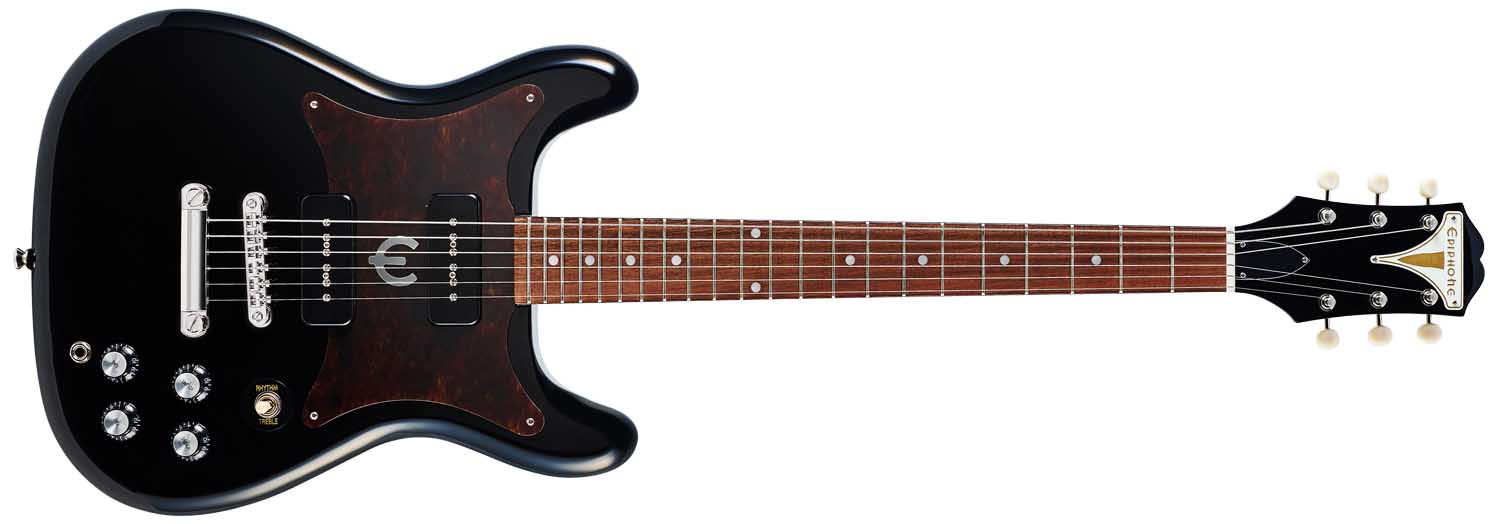
Epiphone Wilshire
- PRICE: £399 / $449
- ORIGIN: China
- TYPE: Double-cutaway solidbody electric
- BODY: Mahogany with rounded edges
- NECK: Mahogany, medium C profile, glued-in
- SCALE LENGTH: 628mm (24.72”)
- NUT/WIDTH: Graph Tech NuBone/43mm
- FINGERBOARD: Indian laurel, unbound with pearloid dot inlays
- FRETS: 22, medium jumbo
- HARDWARE: Epiphone LockTone tune-o-matic bridge and stud tailpiece, Epiphone Deluxe tuners with ivory buttons
- STRING SPACING, BRIDGE: 52mm
- ELECTRICS: 2x Epiphone P-90 Pro ‘soapbar’, twin volume and tone controls, 3-way selector
- WEIGHT (kg/lb): 3.1/6.82
- OPTIONS: Colours only
- LEFT-HANDERS: No
- FINISHES: Cherry, Black (as reviewed)
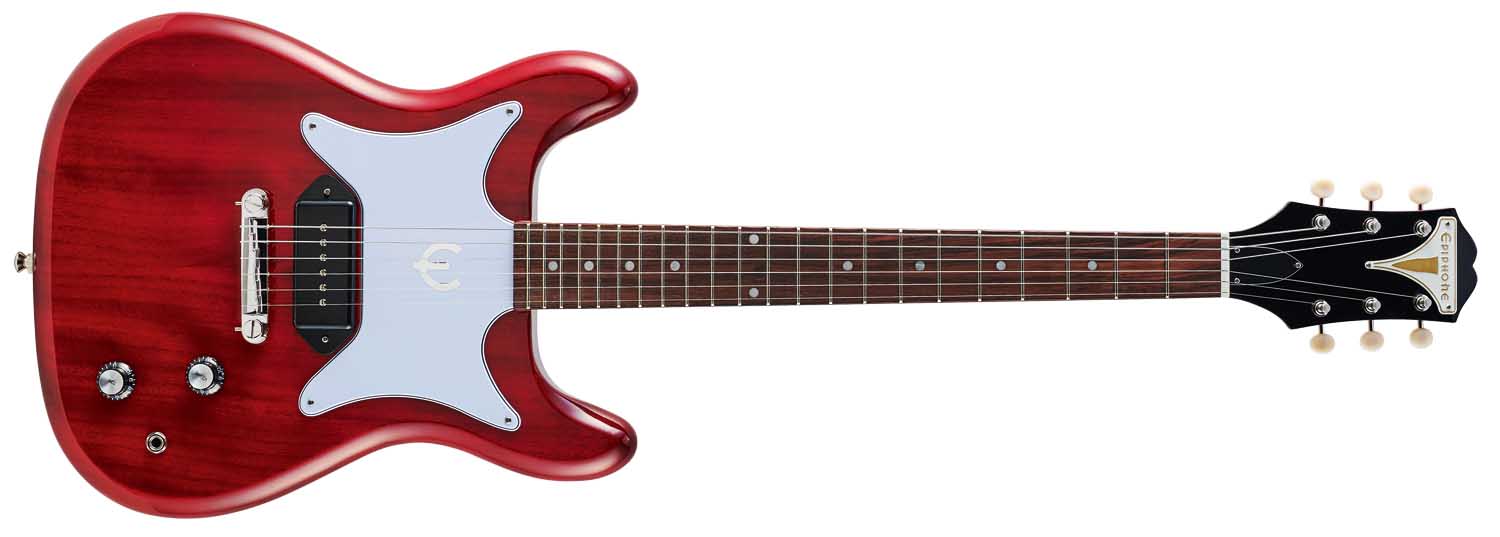
Epiphone Coronet
- PRICE: £349 / $399
- ORIGIN: China
- TYPE: Double-cutaway solidbody electric
- BODY: Mahogany with rounded edges
- NECK: Mahogany, medium C profile, glued-in
- SCALE LENGTH: 628mm (24.72”)
- NUT/WIDTH: Graph Tech NuBone/43mm
- FINGERBOARD: Indian laurel, unbound with pearloid dot inlays
- FRETS: 22, medium jumbo
- HARDWARE: Epiphone Lightning Bar compensated wraparound bridge/tailpiece, ‘3 On A Plate’ tuners with ivory buttons and press in bushings
- STRING SPACING, BRIDGE: 52mm
- ELECTRICS: Single Epiphone P-90 Pro ‘dog-ear’, single volume and tone controls
- WEIGHT (kg/lb): 3/6.6
- OPTIONS: Colours only
- RANGE OPTIONS: Wilshire and Crestwood Custom, as reviewed
- LEFT-HANDERS: No
- FINISHES: Cherry (as reviewed), Black
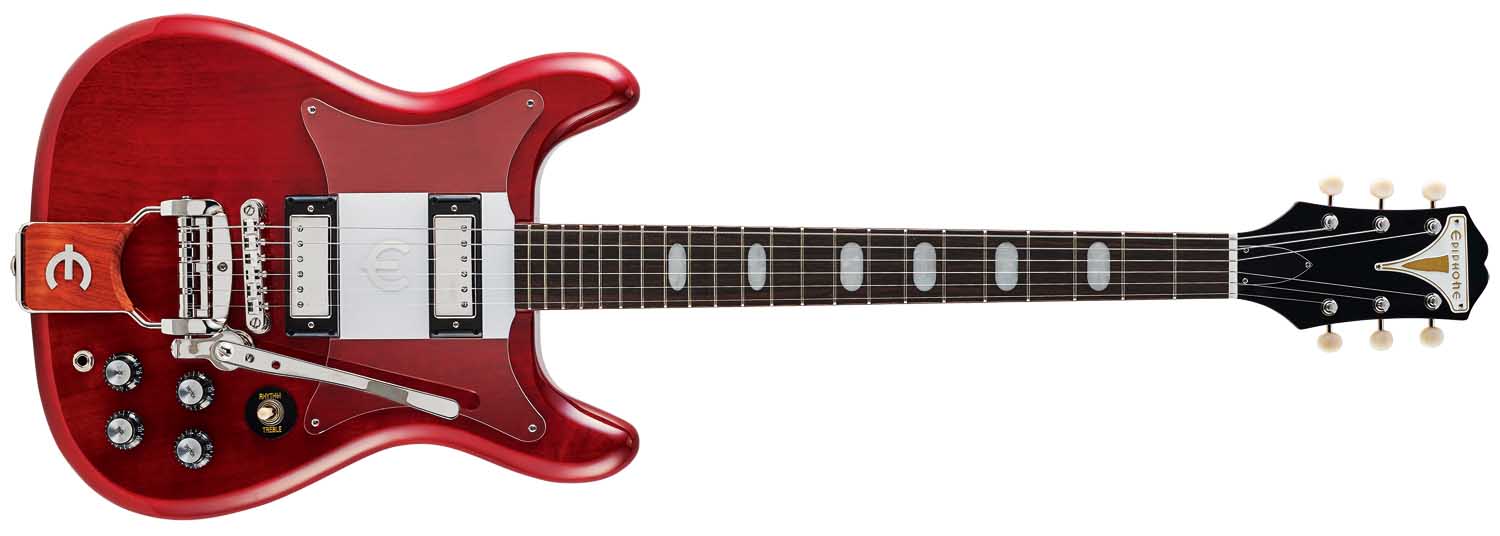
Epiphone Crestwood Custom
- PRICE: £489 / $549
- ORIGIN: China
- TYPE: Double-cutaway solidbody electric
- BODY: Mahogany with rounded edges
- NECK: Mahogany, medium C profile, glued-in
- SCALE LENGTH: 628mm (24.72”)
- NUT/WIDTH: Graph Tech NuBone/43mm
- FINGERBOARD: Indian laurel, unbound with large oblong inlays
- FRETS: 22, medium jumbo
- HARDWARE: Epiphone LockTone tune-o-matic bridge w/ nylon saddles, Tremotone vibrato tailpiece with Indian laurel insert, Epiphone Deluxe Vintage tuners with ivory buttons
- STRING SPACING, BRIDGE: 52mm
- ELECTRICS: 2x Epiphone Pro mini-humbuckers, twin volume and tone controls, 3-way selector
- WEIGHT (kg/lb): 3.2/7.04
- OPTIONS: Colours only
- LEFT-HANDERS: No
- FINISHES: Cherry (as reviewed), Polaris White
- CONTACT: Epiphone
In the late '70s and early '80s Neville worked for Selmer/Norlin as one of Gibson's UK guitar repairers, before joining CBS/Fender in the same role. He then moved to the fledgling Guitarist magazine as staff writer, rising to editor in 1986. He remained editor for 14 years before launching and editing Guitar Techniques magazine. Although now semi-retired he still works for both magazines. Neville has been a member of Marty Wilde's 'Wildcats' since 1983, and recorded his own album, The Blues Headlines, in 2019.
“It holds its own purely as a playable guitar. It’s really cool for the traveling musician – you can bring it on a flight and it fits beneath the seat”: Why Steve Stevens put his name to a foldable guitar
“Finely tuned instruments with effortless playability and one of the best vibratos there is”: PRS Standard 24 Satin and S2 Standard 24 Satin review
